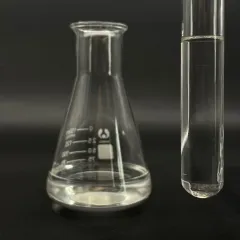Betaine surfactants
It is created by the reaction of fatty tertiary amines and salt chloroacetate, consisting of cocoylpropyl betaine, dodecyl betaine, cetyl betaine, and lauroyl propyl betaine. It is milder than the first 3 and is presently the primary surfactant in child shampoo.
In 1940, the American DuPont Firm created and used this sort of compound. Like amino acid surfactants, this sort of surfactant has solid detergency and low inflammation, and the service is weakly acidic. Animal experiments have actually shown that this type of substance is less toxic. It is an optimal surfactant.
( surfactants in shampoos)
Amino acid surfactants
Made from a mix of coconut oil and amino acids, it is secure, gentle, and non-irritating. The most important thing is that it is naturally weakly acidic and meets the pH needs of healthy skin and hair. It is the suitable surfactant in infant shampoo. They are “cocoyl glycine,” “cocoyl glutamate disodium,” and so on
From the point of view of chemical homes, its pH worth is between 5.5 and 6.5, which is weakly acidic and near the pH value of human skin. Hence, it is gentle and skin-friendly and appropriate for all hair kinds; amino acid surfactants are zwitterionic and easily soluble in water. It is simple to rinse tidy.
But it additionally has constraints. Amino acid surfactants are a number of to dozens of times a lot more costly than regular surfactants, and most are hair shampoos specifically produced babies and young children. The downsides of amino acid surfactants are that they are not rich in foam and have weak purification ability.
The sensation of solidification and turbidity of surfactants in wintertime is generally as a result of the low temperature causing some of its parts to take shape or precipitate.
(surfactants in shampoos)
What happens if surfactant solidifies and ends up being turbid in winter season?
This is a physical sensation and does not have a significant effect on the effectiveness of surfactants. In order to resolve this trouble, the adhering to techniques can be taken:
1. Raise the temperature level: Put the surfactant in a warm atmosphere or increase its temperature by heating to ensure that the crystallized or precipitated parts will slowly dissolve and the surfactant will return to a clear state. Nonetheless, it must be kept in mind that the temperature should be avoided when heating up to prevent impacting the surfactant’s performance.
2. Stirring: For surfactants that have actually strengthened or come to be turbid, they can be brought back to an uniform state by stirring. Stirring can aid taken shape or sped up ingredients redisperse right into the liquid and improve surfactant quality.
3. Include solvent: In some cases, a proper amount of solvent can be contributed to water down the surfactant, consequently improving its coagulation and turbidity. Nevertheless, the added solvent need to work with the surfactant and needs to not influence its usage effect.
Provider of Surfactant
TRUNNANO is a supplier of surfactant with over 12 years experience in nano-building energy conservation and nanotechnology development. It accepts payment via Credit Card, T/T, West Union and Paypal. Trunnano will ship the goods to customers overseas through FedEx, DHL, by air, or by sea. If you are looking for high-quality Stearyl trimethyl ammonium chloride, please feel free to contact us and send an inquiry.
Inquiry us






